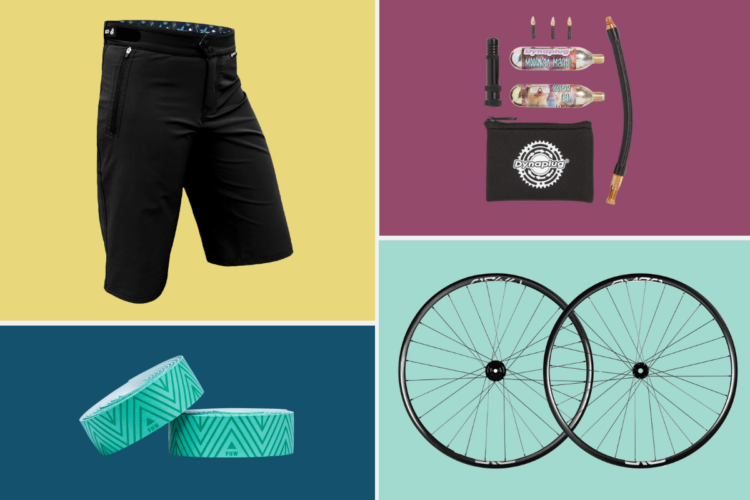
At the end of October, PNW Components released their first carbon handlebar. While PNW has had a sizable lineup of cockpit components, from dropper posts to alloy handlebars and pedals, they hadn’t yet dabbled with composites. A handlebar seems like a great place to start.
PNW Components Loam carbon handlebar specs
- 35mm clamp diameter (31.8mm coming later)
- Shape: 5° upsweep, 10° backsweep
- Width: 800mm
- Rise: 25mm or 38mm
- Weight: 222g
- Price: $154
- Buy from PNW Components
PNW made the Loam Carbon Bar with “anti-fatigue geometry” and tuned it for cornering, according to the brand’s web copy. The Loam’s layup is made for comfort over small bumps and has an “ideal amount” of horizontal stiffness.
PNW says the bars are rated strong enough for e-bikes and DH riding. They have a 5° upsweep and a 10° backsweep. They’re only available in a 35mm diameter at the moment, with a 31.8mm on the way. They come with either 25mm or 38mm of rise. The Loams also come with your choice of decal color for an added $5. They weighed 222g on our scale, slightly lighter than their claimed weight. MSRP is $154.

Installation
There’s not much setup to handlebars. The biggest hassle, depending on who you are, is taking all of your controls off your previous bar, or cutting the new handlebar to your preferred width. The full 800mm is still too wide for my preference, so I cut the bars down to 780mm using the 5mm increment markers on each side of the bar.
The bars have a gritty coating over the center for better clamping and they even come with a tiny bottle of carbon paste. It was difficult to tell when the bars were centered. Some of this might be preference, but with the bars’ first marking lined up with the center of my stem’s clamp, they felt like they were too far forward. Rolled back to the next marking, the were too far back. I’ve decided to settle on a spot between the first and second marking.

On the trail
I’ve tested the bars through some of the best handlebar testing conditions out there–if you believe those exist. I do. On Colorado’s Western Slope in Grand Junction, you’ll find plenty of janky, square-edged rocks just poking their heads out of the dirt. My second and third rides on the Loam bars were in Moab, and my fourth was back home on a fast, rutted, and rocky trail.

If I summed up the PNW Loam carbon bars simply, I’d say I have had no complaints about their ride feel. Carbon bars do have a benefit over alloy in that the material has inherent damping properties, though there are plenty of good aluminum bars on the market that don’t feel too stiff. And there are definitely carbon bars that do feel too stiff.
The Loams have a “just right” tune to them and I don’t expect to have any complaints about them in the future. Handlebars are one of those things you get a good sense of right away if they are going to be too stiff or not.
PNW has an array of stickers to color-match your bike which you can order and affix on your own. The white edges of the logo stickers do make an unfortunate contrast with the black bars.
Lastly, the $154 price tag is in line with other handlebar options on the market now. It’s a relatively small purchase price for a nice upgrade if you’re rocking alloy OEM bars.

Pros and cons of the PNW Loam carbon handlebars
Pros
- Good feel on any trail
- Good price, weight, and looks
Cons
- Can be hard to find perfect position
Bottom line
The PNW Loam carbon handlebars are tuned for both stiffness and compliance and have an attractive weight and price tag.



















